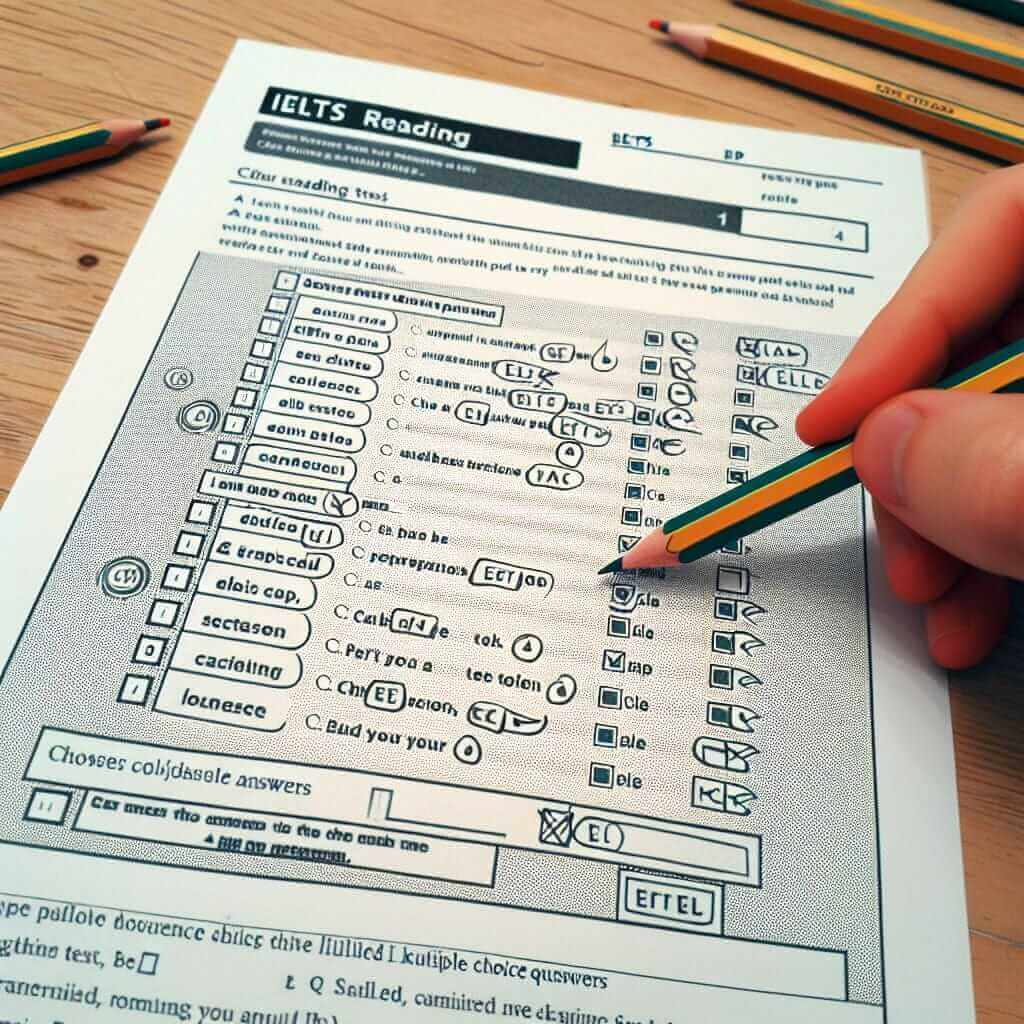The IELTS Reading test, while a measure of English language proficiency, can often feel like a race against time. For both educators guiding students to success and students aiming for their desired band score, understanding the nuances of the marking scheme is crucial. This guide delves into the intricacies of “how to mark IELTS reading” answers, equipping you with the knowledge to confidently assess performance and enhance your IELTS preparation.
Deciphering the IELTS Reading Marking Scheme
Contrary to common misconceptions, the IELTS Reading test isn’t about simply finding the “right” answer. It’s about demonstrating your ability to:
- Comprehend information: Identifying the writer’s overall purpose, main ideas, and supporting details.
- Interpret meaning: Understanding the text at a deeper level, including inferences, attitudes, and opinions.
- Locate specific information: Scanning and skimming for specific details, facts, and figures.
Therefore, the marking scheme is designed to assess these skills. Each correct answer on the answer sheet corresponds to one mark. There are no penalties for incorrect answers, so attempting all questions is always recommended.
Answer Formats and Their Implications
The IELTS Reading test employs various question types, each demanding a specific approach to marking:
-
Multiple Choice: These require precise comprehension to select the most accurate option from a list. Careful attention to detail and elimination of incorrect options are key.
-
Matching Headings: Testing your ability to summarise and identify the main idea of each paragraph or section. Look for key words and phrases that link the heading to the passage.
-
Sentence Completion: Evaluating your ability to locate and extract specific information accurately. Pay close attention to grammar and word limits when transferring answers.
-
True/False/Not Given: This challenging format assesses your inference skills. You need to determine if the information in the text supports, contradicts, or doesn’t mention the statement.
-
Yes/No/Not Given: Similar to True/False/Not Given but focusing on the writer’s opinion or claims. You need to decipher the author’s viewpoint rather than factual information.
Effective Marking Strategies for IELTS Reading
To ensure accurate marking, consider these essential tips:
-
Familiarise Yourself with the Answer Key: Before marking, thoroughly review the provided answer key and understand the acceptable variations for each question.
-
Focus on Meaning, Not Just Words: While marking, prioritise the understanding of meaning over mere word-for-word matching, especially in subjective question types.
-
Be Mindful of Spelling and Grammar: Incorrect spelling and grammar can affect scores, particularly in answer completion tasks. However, minor errors that don’t hinder comprehension might be accepted.
-
Apply Consistent Marking: Maintain uniformity in your assessment throughout the entire test to ensure fairness. Use the same criteria for each question type and difficulty level.
-
Provide Constructive Feedback: Offer specific insights into areas where the student excelled or needs improvement. Highlight strengths and weaknesses, suggesting targeted practice areas.

Example: Analysing a “True/False/Not Given” Question
Text Excerpt:
“The use of renewable energy sources has increased significantly in recent years.”
Statement:
“The adoption of renewable energy has completely replaced fossil fuels globally.”
Analysis:
The text states that renewable energy use has “increased significantly,” implying growth but not complete replacement of fossil fuels. Therefore, the correct answer is False.
Key Takeaways for IELTS Success
Mastering the art of accurately marking IELTS Reading answers is an invaluable skill for both educators and learners. By understanding the marking criteria, employing effective marking strategies, and consistently applying them, you can confidently evaluate performance and enhance the IELTS learning journey. Remember, consistent practice, coupled with a deep understanding of the test format and marking scheme, is the key to achieving your desired band score.